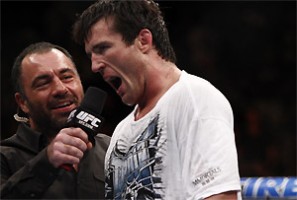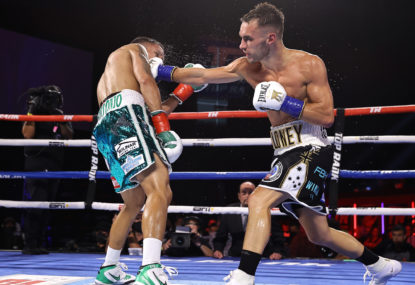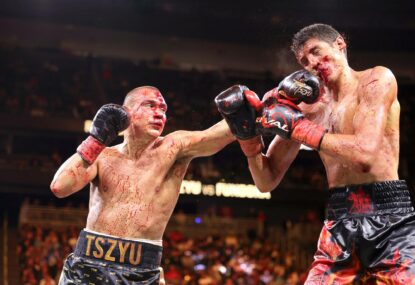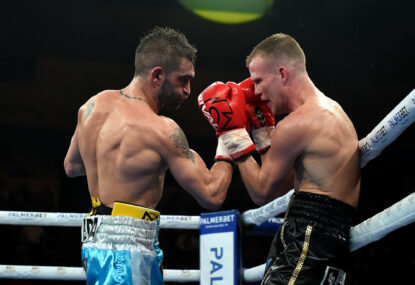There are few things I dislike more than people who point out everything that is wrong but have zero suggestions on how to make things better.
It’s the ultimate annoyance to me, and as such, I couldn’t just drop yesterday’s “Is UFC becoming over-saturated?” piece. I was unable to peace out without offering my thoughts on how to get things back to good.
I’m many things, but a hypocrite is not one of them. Well, not often, and never on purpose. Sometimes it’s just hard to keep all my opinions and theories straight, you know?
For those who somehow didn’t read my last offering (shame on you!) he’s the abridged version:
There are too many fight cards featuring too many average fights right now in the UFC, and they’re starting to loss hold of the audience. Watching a UFC event used to be something special, but now fight cards are so frequent that they’re becoming equivalent to a regular season baseball game.
Unless you’re a insatiable baseball fan, chances are you don’t care about Game 72 of the MLB season. That’s how many fight fans are starting to feel about the weekday televised offerings from the UFC.
Now that you’re up to speed, let’s move on to phase two of the discussion – the part where we talk about what the UFC could do to reverse course, and get back to being must-see TV for fight fans.
As I said in the initial piece, I don’t think the situation is as doom and gloom as some people do. You go through cycles, and right now, the UFC is in a down cycle, but it’s not something they can’t get out of fairly easily. Here are my suggestions:
1. Trim the Roster
A big contributor to fans becoming less invested in every single UFC fight card is that there are so many fights between guys they’ve never heard of before and fighters they have no investment in moving forward.
Injuries and two seasons of The Ultimate Fighter each year have built a stockpile of lower tier talent, and lately, the preliminary portion of most cards have been pairings between fighters who fall into one of those two categories.
As a hardcore fan, I’m somewhat interested in seeing what developments a guy who didn’t even make it to the semifinals on his respective season of TUF can do next time out, but most people aren’t. Same goes for guys who fill in on short notice, lose, and get a second fight as thanks. Most of the time I’m down for watching them compete again, but I’m not exactly your average fan.
Removing some of those “bottom of the fight card” fighters from the rotation would be a great place to start. Giving them a chance in Strikeforce might be one way to not make it such a tough pill to swallow, but ultimately, it’s a business move, and one that would help the UFC begin moving towards reconnecting with an audience that is partially slipping away.
2. New Approach to Televised Cards
I don’t necessarily dislike the idea of having frequent televised cards; it’s a great way to gain exposure, and introduce fighters to a wider audience than on pay-per-view. What I think needs to happen, however, is for the UFC to take a page from Strikeforce when it comes to some of their televised events.
The Strikeforce Challengers series may not have generated massive ratings, but it did a solid job of showcasing up-and-coming fighters. You saw the same collection of prospects competed over the course of various events, giving you a way to connect with them as a fan, and track their progress.
Tyron Woodley made his way from a newcomer to a welterweight title contender through the series, with four of his first six appearances in the company coming on Challengers events, including a pair of headlining efforts. It became evident very early that he was someone to watch, and someone the company was pushing as a potential contender. By the time he came around to fighting Paul Daley on the main card of last summer’s Fedor versus Henderson event, fans were well acquainted with him.
That two year commitment to showcasing him on the Challengers series events has paid off, especially now that he’s expected to fight Nate Marquardt for the vacant Strikeforce welterweight title later this year.
The UFC could easily apply the same formula to their televised fight cards, using them as a means to establishing contenders, and showcasing up-and-coming talent with championship potential. Take a kid like Erik Koch for example.
“New Breed” faces Jose Aldo for the featherweight title in the main event of UFC 149 this summer in Calgary, but fans – especially casual fans – haven’t seen enough of him to be geared up for this contest. With just two UFC fights to his credit, and only one of those bouts being televised, how are fans to know whether or not he’s a viable threat to the Brazilian champion?
Instead of his first UFC bout being buried on the UFC 128 undercard, a televised card would have been a better platform to showcase the emerging talent. Additionally, he absolutely blistered Raphael Assuncao, and if there is one one to connect with fans quickly, it’s a monster knockout.
3. Return to “Special Event” Status for PPV
UFC 147 isn’t a pay-per-view caliber card. It should be a televised event, especially now that Silva-Sonnen II has been shuffled to UFC 148 two weeks later.
And UFC 149 two weeks after that.
And UFC 150 three weeks after that.
Additionally, two or three weeks isn’t enough time to build interest in an upcoming event, especially not one you want people to pay $50 to see the show. Not when there are only a couple of must-see match-ups on each pay-per-view event either.
When there was a month (or more) between pay-per-views, you counted down until the next show arrived. If pay-per-view shows are going to get back to being viewed as “special events” by the fans, the UFC needs to get back to staggering them better.
If they move to using the televised shows to build prospects and contenders, those who emerge from that “series” can become main card pay-per-view fighters. Paired with championship fights and marketable veterans, you have solid shows that people not only want to see, but will happily pay $50 to enjoy.
Like I said in the first half of this two-piece combo, I don’t have the same “doom and gloom” outlook on the state of the UFC as some other journalists and fans. Yes, the ratings and buy rates haven’t been as large as the UFC would like, but there is all kinds of time and opportunity to right the ship.
The key is identifying that there is an issue, and working to improve things. Take some of the criticisms being offered to heart, make incremental changes, and see what happens.
If they can do that, they can reverse the trend. If not, this will get very, very interesting in the future.
E. Spencer Kyte is the author of Keyboard Kimura, the MMA blog of Vancouver’s leading newspaper, The Province. Follow him on Twitter (@spencerkyte), or Facebook.



































































































